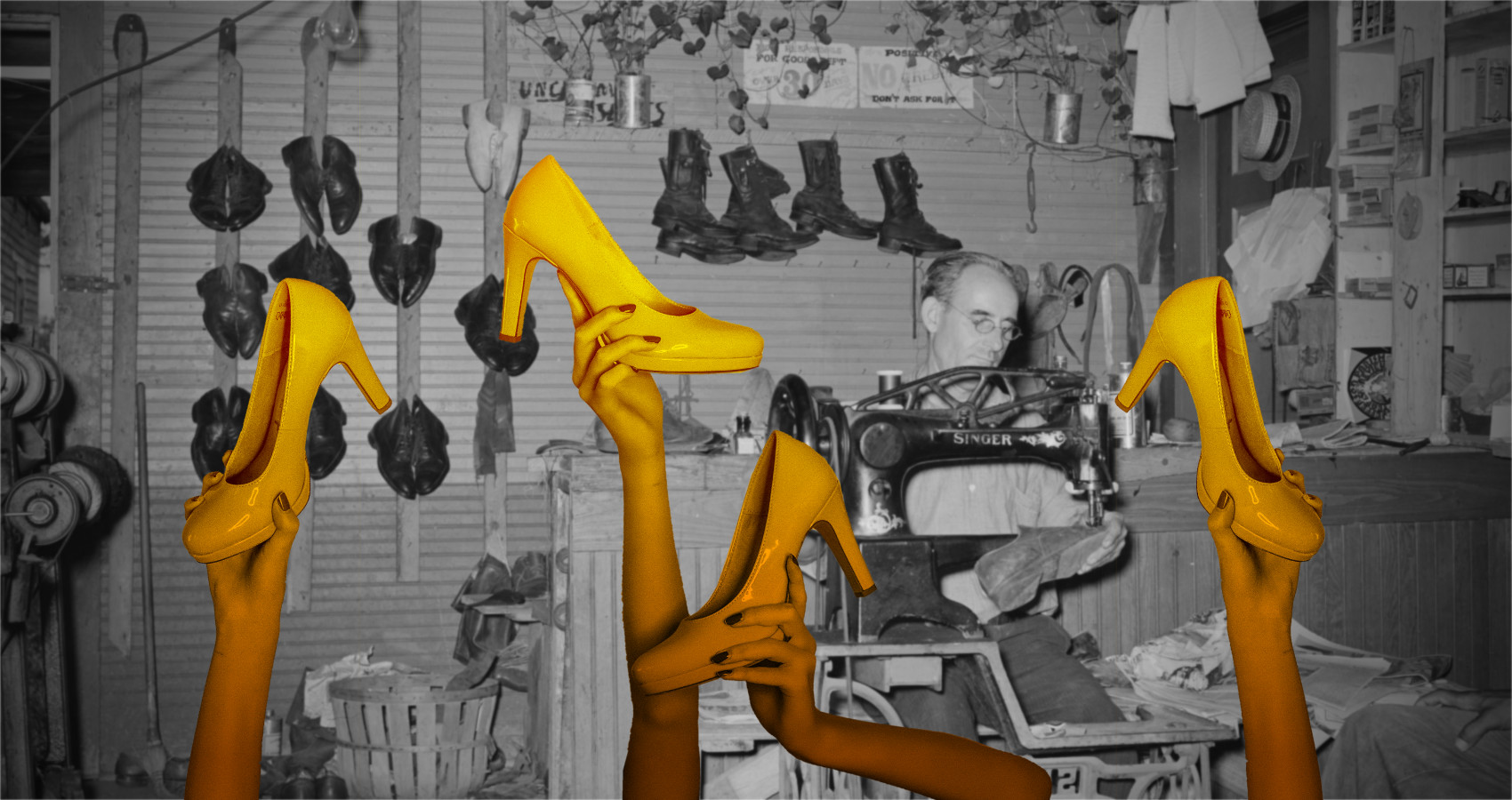
Crafted With Care: the Process Behind Handcrafted Luxury Shoes
Every stitch matters: unveiling the craftsmanship of luxury footwear.
When you think about luxury shoes, it's easy to overlook the intricate process that brings them to life. It all starts with the selection of the finest leathers, chosen for their durability and aesthetic appeal. From there, skilled artisans meticulously design and handcraft each pair, ensuring every stitch contributes to both comfort and elegance. But what really sets these shoes apart is the attention to detail at every stage—from pattern making to the final polish. Curious about how each step adds up to create a masterpiece? Let's explore the journey of crafting luxury footwear.
History of Luxury Shoemaking
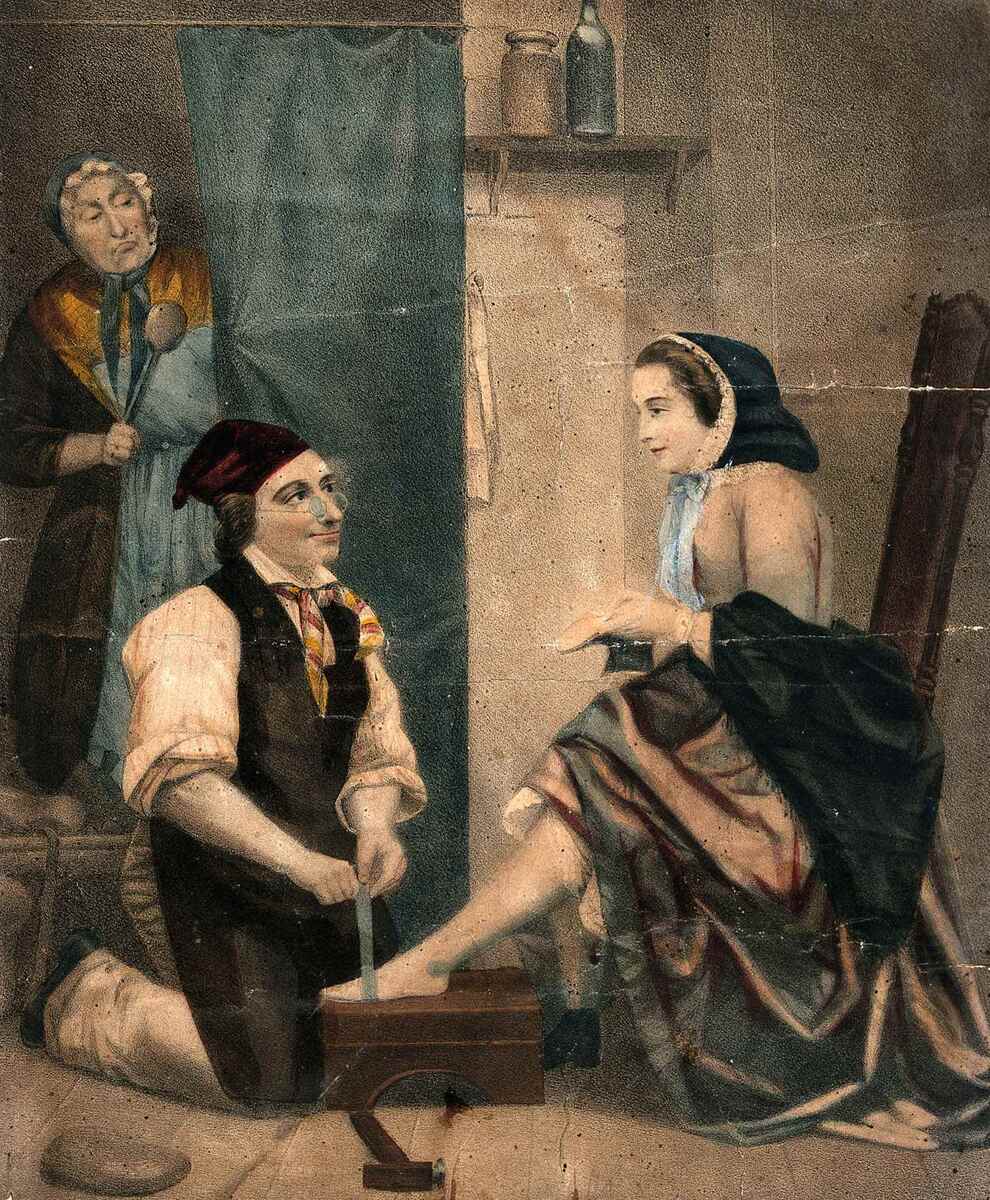
From the cobblestone streets of Renaissance Italy to the haute couture runways of Paris, the history of luxury shoemaking is as intricate as the stitches that hold these masterpieces together.
You'll find that each era contributed its own flair and technique, culminating in the exquisite designs we admire today.
In the 16th century, Italian cobblers perfected the art of shoemaking, introducing techniques that emphasized both durability and beauty.
Imagine the meticulous hand-cutting of leather and the delicate stitching that guaranteed each pair was a work of art.
By the 19th century, French shoemakers elevated this craft further, prioritizing elegance and refinement.
Paris became synonymous with luxury footwear, where shoemakers like François Pinet and Roger Vivier set standards that are still revered.
Every stitch, every curve, and every hand-carved heel reflects a dedication to perfection.
Artisans have spent centuries honing their skills, assuring that each shoe isn't just an accessory but a reflection of human ingenuity and artistry.
You can almost feel the passion and precision in every pair, a legacy passed down through generations of master craftsmen.
This rich history is the soul of every handcrafted luxury shoe.
Selecting Premium Leathers
When it comes to selecting premium leathers, the tactile experience of running your fingers over supple hides is just the beginning. You need to choose hides that aren't only visually stunning but also durable and versatile.
Each piece of leather tells a story — from the way it was tanned to its unique grain patterns. Your goal is to guarantee that every shoe crafted will be a masterpiece, both in look and feel.
Start by considering the type of leather:
-
Full-grain leather: The highest quality, known for its natural surface and durability.
-
Top-grain leather: Slightly sanded to remove imperfections, offering a smooth and uniform appearance.
-
Suede: Known for its soft texture, adding a lush, tactile element to your designs.
-
Patent leather: High-gloss finish, perfect for shoes that demand attention.
Inspect each hide meticulously. Look for consistency in texture and color. Feel the suppleness and check for any irregularities.
Smell the leather; a rich, earthy aroma often indicates quality tanning processes. Remember, the right leather not only shapes the shoe but defines its character, guaranteeing each pair is a step above the ordinary.
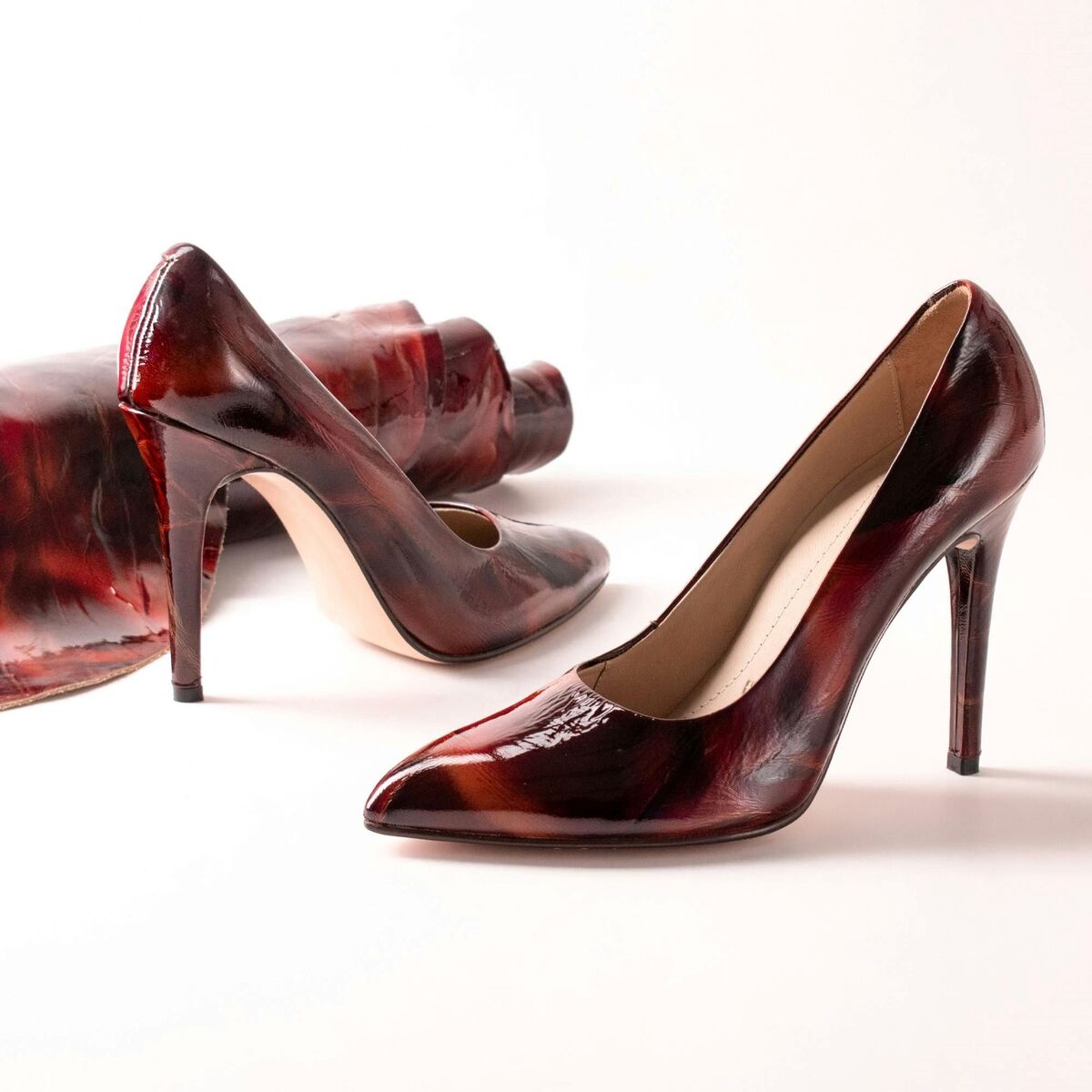
Designing the Perfect Shoe
Crafting the perfect shoe starts with a vision, an intricate blend of artistry and functionality. You begin with a sketch, where every line and curve conveys a balance of elegance and comfort. Imagine the silhouette, the arch, the heel height; each component must harmonize to create a piece that's both beautiful and wearable.
Next, select the materials that'll bring your vision to life. Luxurious leathers, sumptuous suedes, and delicate fabrics are your palette. Consider the texture, flexibility, and how it'll age over time. The color palette isn't just about current trends; it's about timelessness and how each shade complements the design.
Paying meticulous attention to detail, you'll refine the shoe's proportions. The toe shape, for instance, shouldn't only reflect the latest fashion but also guarantee comfort.
The stitching must be precise, enhancing both durability and aesthetics.
Pattern Making Techniques
Creating patterns is a fundamental step in transforming your shoe design from a sketch into a tangible masterpiece. This intricate process begins with a meticulous drafting of each shoe component, guaranteeing that every curve and line aligns to create a harmonious whole.
To achieve perfection, you'll rely on a combination of traditional craftsmanship and modern precision.
Here are key techniques to take into account:
-
Last Selection: Choose a high-quality last, the 3D form around which the shoe is built. The last dictates the shoe's shape and fit, making it a critical starting point.
-
Pattern Drafting: Use paper or digital tools to draft the shoe's patterns. Each piece, from the vamp to the heel counter, must be carefully measured and aligned.
-
Mock-Up Creation: Construct a prototype using inexpensive materials. This allows you to refine the fit and make adjustments before cutting into premium leather.
-
Grading: Scale your patterns to different sizes while maintaining the original design's integrity. This guarantees consistency across various shoe sizes.
Attention to these details guarantees your patterns aren't just functional but also aesthetically pleasing, embodying the luxury and craftsmanship that define handcrafted shoes.
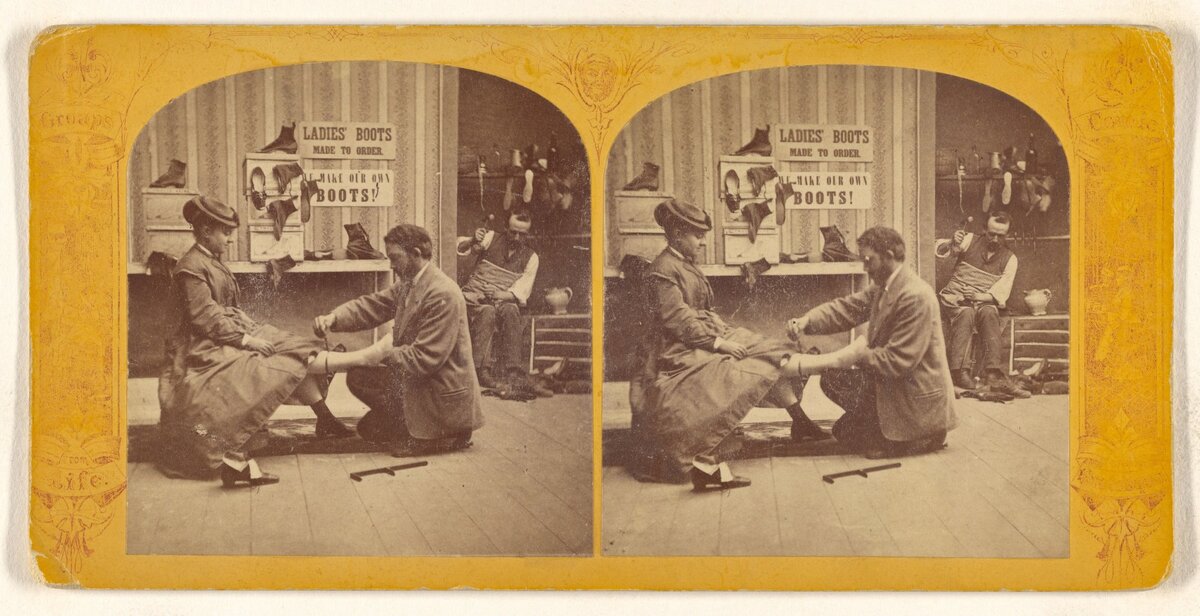
Cutting the Leather
With your meticulously drafted patterns in hand, you're ready to bring your design to life by cutting the leather. First, select high-quality, full-grain leather, known for its durability and rich texture. Lay your leather flat on your work surface, confirming it's free from defects.
Position your patterns carefully, aligning them with the leather's natural grain. This step is crucial for the shoe's final appearance and strength.
Using a sharp, precise knife, cut along the patterns' edges with steady hands. Avoid pressing too hard; let the knife glide through the leather. Each cut should be clean and exact, confirming no jagged edges that could compromise the shoe's integrity.
Pay attention to smaller pieces like the toe cap and heel counter, as these require extra precision.
Don't rush this process. The clean cuts you make now will define the shoe's shape and fit. Check each piece against your patterns to confirm accuracy.
This attention to detail is what sets handcrafted luxury shoes apart. Every cut, every slice, is a step closer to creating a masterpiece of craftsmanship and elegance.
You've now transformed raw material into the building blocks of something extraordinary.
Hand Stitching Methods
Hand stitching is an art that breathes life into each piece of leather, turning it into an exquisite luxury shoe. You're not just sewing pieces together; you're binding craftsmanship and heritage. Each stitch tells a story of precision and dedication. To achieve perfection, artisans use specialized techniques, guaranteeing every thread is meticulously placed.
Imagine the delicate process:
-
Backstitching: Guarantees durability by overlapping stitches for a seamless, robust finish.
-
Saddle stitching: Employs two needles for a symmetrical, strong stitch, perfect for high-stress areas.
-
Blind stitching: Hides the thread within the leather, creating a clean, uninterrupted surface.
-
Lock Stitching: Interlocks the upper and lining, securing them without visible knots.
Each method serves a unique purpose, enhancing both the shoe's aesthetic and functionality.
When you see a luxury shoe, you're witnessing hours of painstaking handwork. The needle's rhythm, the artisan's focus, and the leather's response all harmonize to create something extraordinary.
Attention to detail isn't just a practice; it's a philosophy.
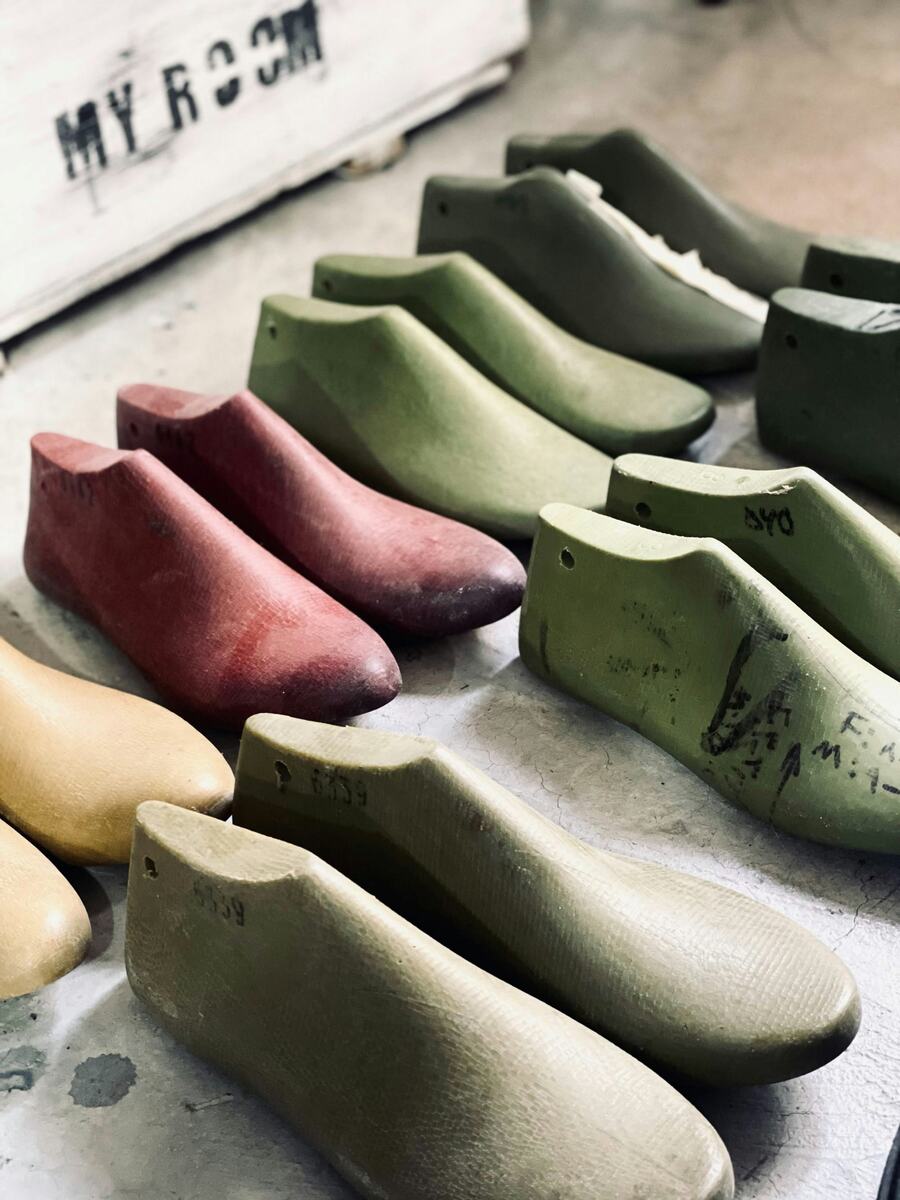
Assembling the Upper
Every luxury shoe begins to take its true form during the assembly of the upper. At this stage, you're bringing together carefully selected pieces of leather or suede, each cut with precision. The pieces are hand-stitched, guaranteeing every seam aligns perfectly to create a flawless surface.
It's here that the shoe starts to reveal its character, where the material's texture, color, and grain come to life under skilled hands. You'll first align the vamp, quarters, and heel counter, securing them with temporary stitches. This allows you to adjust and perfect the alignment before making it permanent.
Once satisfied, the pieces are firmly sewn together using waxed thread, enhancing durability and adding a touch of elegance. Each stitch is meticulously placed, reflecting the artisan's dedication to quality.
The next significant step is the incorporation of the lining. Crafted from soft, luxurious materials like calfskin, it's stitched inside the upper to guarantee comfort and breathability.
This hidden layer is your secret to a superior wearing experience. With the upper assembled, your shoe has now changed from mere components to a cohesive, beautifully crafted piece, ready for the next phase in its journey.
Constructing the Sole
Now that the upper is complete, the next stage in crafting your luxury shoe involves constructing the sole. This step requires meticulous attention to detail and an appreciation for the art of shoemaking.
To start, a master craftsman hand-selects the finest leather, guaranteeing durability and comfort. The leather is then carefully cut to match the shoe's unique design.
The next phase is to shape the leather, a process that entails soaking it in water to achieve the right flexibility. Once pliable, the leather is molded to fit the shoe's silhouette. This guarantees a perfect fit and a seamless integration with the upper.
Here are the key steps in constructing a luxury shoe sole:
-
Leather Selection: Hand-pick top-quality leather for strength and longevity.
-
Cutting: Precisely cut the leather to conform to the shoe's design.
-
Shaping: Soak and mold the leather for ideal fit and comfort.
-
Stitching: Use durable threads to stitch the sole to the upper, guaranteeing a secure bond.
Each step is performed with an eye for perfection, resulting in a sole that not only complements the upper but also enhances the overall aesthetics and functionality of your luxury shoe.
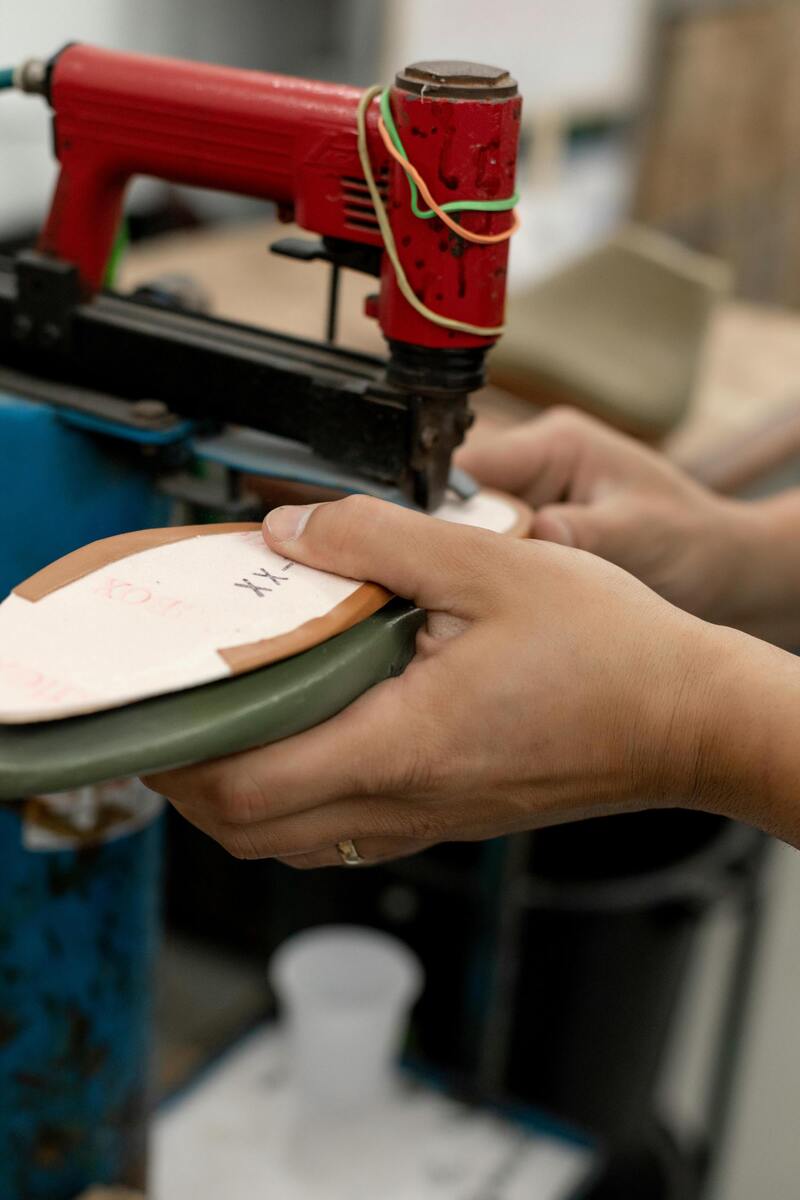
Lasting the Shoe
With the sole meticulously crafted and ready to be united with the upper, the next step is the art of lasting the shoe. This process involves shaping the leather upper to the contours of a foot-shaped mold called a last. Each last is a work of art, designed to guarantee a perfect fit and elegant silhouette.
Begin by securing the upper to the last, carefully pulling and stretching the leather to achieve a snug fit without wrinkles. You'll use small nails or tacks to hold the leather in place temporarily. The artisanal focus here is essential; every pull and stretch must be done with precision to maintain the shoe's integrity and aesthetic.
Next, you meticulously smooth the leather around the last, guaranteeing the curves and lines are flawless. The toe, heel, and sides need special attention, as these areas define the shoe's final shape.
Once satisfied with the fit, you permanently secure the upper to the insole and sole, often using a combination of stitching and adhesive for durability. This stage requires a practiced hand and an eye for detail, transforming raw materials into a beautifully shaped piece of footwear, ready for its final touches.
Adding Final Touches
As the shoe nears completion, the final touches breathe life into your handcrafted creation. You'll find that these last steps are where the artistry truly shines. Every detail counts, from the way the leather is polished to the careful threading of laces.
First, the leather undergoes a meticulous polishing process, ensuring it exudes a luxurious sheen. The soles are then attached with precision, using time-honored techniques to guarantee durability and comfort.
-
Hand-Painted Edges: The edges of the shoe are often hand-painted to add a refined finish and protect the leather.
-
Custom Laces: Select laces that complement the shoe's design, adding a touch of individuality and elegance.
-
Heel Detailing: Attention to the heel's detail, whether it's adding a logo or a unique pattern, brings a bespoke element.
-
Final Buffing: The shoe is given a final buffing, ensuring a pristine, polished look that catches the eye.
These finishing touches transform a crafted shoe into a masterpiece. Each step is a reflection of the artisan's skill and your taste for luxury.
In the end, what you hold isn't just a shoe, but a work of art, ready to be worn with pride.
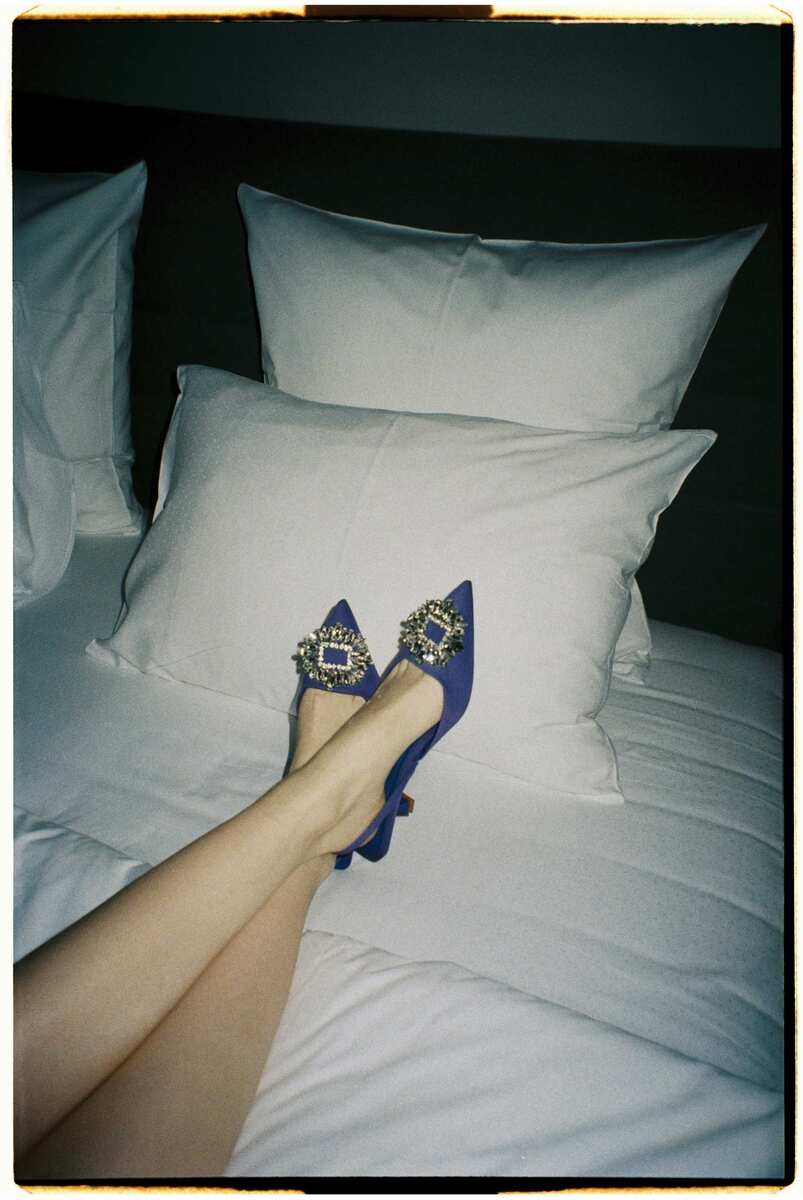
Quality Control Measures
Every handcrafted luxury shoe undergoes rigorous quality control measures to confirm it meets the highest standards of excellence. As you step into the world of artisanal craftsmanship, you'll notice the meticulous attention to detail.
Each shoe is inspected for symmetry, confirming both pairs match perfectly in shape and design. Skilled artisans examine the stitching, checking for consistency and strength, confirming every seam is flawless.
They also scrutinize the leather, looking for any imperfections—only the finest cuts are used. The soles are tested for durability and comfort, making certain they provide the right balance of support and flexibility.
Color consistency is another focal point. Craftsmen compare the hues under various lighting conditions to confirm uniformity.
They also verify that embellishments, such as buckles or laces, are securely fastened and of the highest quality.
Caring for Luxury Shoes
Having guaranteed the highest quality through rigorous control measures, the next step is maintaining that luxury. Proper care guarantees that your handcrafted shoes remain pristine and elegant for years. Here's how you can keep them in impeccable condition:
-
Clean Regularly: Use a soft, damp cloth to wipe away dirt and dust. For deeper cleaning, a specialized leather cleaner is essential. Avoid harsh chemicals that can damage the delicate material.
-
Condition and Polish: Leather needs hydration to avoid cracking. Apply a high-quality conditioner, let it absorb, and follow up with a polish that matches the shoe's color. This not only nourishes the leather but also enhances its shine.
-
Store Properly: Always use shoe trees made of cedar. They maintain the shape of your shoes and absorb moisture, preventing unpleasant odors and deformation.
-
Rotate and Rest: Give your shoes a day off between wears. This allows the leather to breathe and regain its form, prolonging the life of the material.
Conclusion
Imagine slipping into a pair of handcrafted luxury shoes, feeling the supple leather, knowing artisans meticulously selected and stitched every piece. Each step you take embodies centuries of shoemaking tradition. By appreciating the artistry and care that goes into every stitch, you're not just wearing shoes—you're embracing a legacy of elegance and craftsmanship. So, next time you wear those bespoke shoes, remember the artisans' dedication, ensuring your every step exudes timeless luxury.











